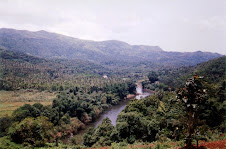Out of the 6,700 languages spoken by people all over the world, a third are in danger of extinction.
Preventing this, or at least slowing the process, is the massive challenge faced by researchers and academics at the World Oral Literature Project, which was established by Cambridge University in January 2009.
Preventing this, or at least slowing the process, is the massive challenge faced by researchers and academics at the World Oral Literature Project, which was established by Cambridge University in January 2009.
Dr Mark Turin, director of the project and research associate at the Museum of Anthropology and Archaeology, said the project has attracted much interest since its inception.
It works with local communities and fieldworkers who are now collecting and recording texts, myths, songs, legends, proverbs, narratives and other various literatures that can be used to save a language from vanishing without record.
Dr Turin said there were many reasons for preserving and documenting endangered languages.
He said: “Each and every language is a celebration of the rich cultural diversity of our planet and an expression of the unique ethnic, social, regional or cultural identity and world view of a people.”
The project is funding fieldwork and other projects through grants in locations all over the world, including Colombia, Malawi, India, Mongolia and Nepal. It has so far supported the documentation of the oral literature, traditions and languages of some 15 communities.
The work of preserving the world’s languages, time-consuming and intensive, comes with a sense of urgency. According to Dr Turin, the process of extinction can be quite rapid.
He said: “We should remember that the evolution of a species or a language takes much longer than its extinction.”
However, determining whether a language is actually endangered is not a precise science.
Researchers need to not only look at the total number of people who speak the language, but their ages as well. If the majority of people speaking a language are elderly or above the age of reproduction, the language is at risk of dying off with the living population.
Researchers also study the rate of transmission between parents and children to establish whether the language will be actively used by subsequent generations.
Another key determinant of the survivability of a language is whether it has a writing system. Some languages are only spoken or signed. In Nepal, for example, only 10 per cent of the more than 100 languages spoken in the country have writing systems.
Geographically, endangered languages are thought to be concentrated between the Tropics of Cancer and Capricorn, especially around the Equator.
Dr Turin said: “Recent scholarship on language endangerment points to an intriguing correlation: language diversity appears to be inversely related to latitude, and areas rich in languages also tend to be rich in ecology and species.
“Both biodiversity and linguistic diversity are concentrated between the tropics and in inaccessible environments, such as the Himalayas, while diversity of all forms tails off in deserts.”
Globally, the majority of people speak just a handful of languages. In fact, 95 per cent of the world’s population speaks just 5 per cent of world’s living languages.
The world’s most popular languages, such as English and Spanish, are often second languages for many people, but can quickly become primary languages out of necessity. Because of this trend, there has been a growth in “heritage languages” – those in which people only know how to say a few select words, such as grandmother or grandfather. Once a language has reached this phase, it can quickly become extinct.
And the risk of extinction is now more prevalent than ever. Globalisation, although also a key element in preserving languages, has caused a massive cultural and geographical shift. People looking for a better standard of living move from rural to urban areas, often cities, where they need to speak the most common urban or national language.
There is also a perception that traditional languages are outdated or unfashionable, whereas widely spoken languages are seen as worldly and sophisticated.
Dr Turin said: “People think that to be modern they have to leave their old ways at the doorstep of modernity.”
The project is trying to counteract this trend and has received support in its efforts from some unexpected sources. For example, a man from Taiwan – a member of the Paiwan ethnic group, which had a total population of just over 70,000 in the year 2000 – walked into the project’s offices with tape recordings of songs and prayers in his traditional language, which he wanted the project to help him preserve.
Judging from these types of responses, there is a strong desire to keep the world’s linguistic diversity from fading.
The project has been holding workshops and lectures to provide an opportunity for researchers and academics to share their knowledge and findings with the public and each other. The lectures are free and open to the public – the workshops cost £30 for registration. The next workshop, in December, will focus on the distribution of oral literature through traditional and digital media.
For more information, see www.oralliterature.org.


No comments:
Post a Comment